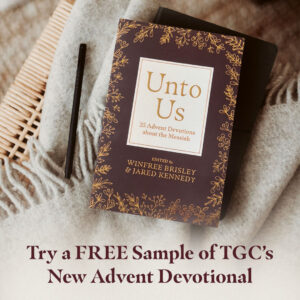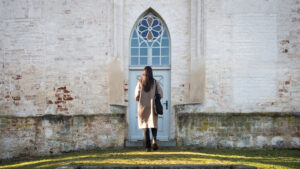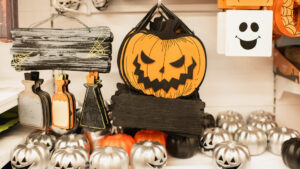’Tis the season when Christians around the world engage in singing Christmas carols (the phrase “’Tis the season” comes from the lyrics of the 1862 Christmas carol “Deck the Halls”).
Here are nine things you should know about this holiday tradition.
1. Carols weren’t always spiritual (though they mostly are now).
The word carol originated around A.D. 1300 from the Old French word “carole,” which referred to a “kind of dance in a ring, [a] round dance accompanied by singers.” It originally was used to refer to any festive songs and only later became associated with holiday and religious music. Today, carols are almost exclusively associated with Christian holidays—especially Christmas, but also Advent and Easter.
2. Carolers caroling the caroled.
A person who sings carols is a caroler. Singing carols is known as caroling. And having sung a carol or (having been sung to) is to have caroled or to have been caroled.
3. The first Christmas carol was taken from the Bible.
The age of apostles is believed to have ended around A.D. 98, with the death of John. The first Christmas carol is believed to have come about 30 years later in A.D. 129, when Telesphous, the Bishop of Rome, ordained that “In the Holy Night of the Nativity of our Lord and Savior, all shall solemnly sing the ‘Angel’s Hymn.’” The lyrics are believed to have been taken from Luke 2:14: “Glory to God in the highest heaven, and on earth peace to those on whom his favor rests.”
4. The ‘Father of the Christmas carol’ also invented the nativity scene.
Francis of Assisi is credited with staging the first nativity scene in 1223. It’s believed he also started the practice of singing hymns around such an outdoor nativity display, which is why he is sometimes referred to as the “Father of the Christmas carol.”
5. Printed books of Christmas songs made caroling more popular.
Caroling became popular in Victorian England with the publication of music books dedicated to Christmas songs. For example, in 1833 an English lawyer named William Sandys published Christmas Carols Ancient and Modern, which included the first printing of “God Rest Ye Merry, Gentlemen,” “The First Nöel,” and “Hark! The Herald Angels Sing.”
6. House-to-house caroling originally included a punch bowl of cider.
In Victorian England, the tradition of visiting people’s houses and singing—a practice known as wassailing—was adopted for Christmas and became synonymous with “caroling.” Wassailing was originally a practice in which people would walk door-to-door to their neighbors’ houses, singing and offering a drink from the wassail bowl in exchange for gifts. Wassail is a beverage made from hot mulled cider and spices.
7. The most recorded Christmas carol in the U.S. is ‘Silent Night.’
In 2014, TIME checked the records at the U.S. Copyright Office, which offers digitized registrations going back to 1978, and collected data on every Christmas album recorded since that time. “Silent Night” was the most popular carol, with 733 copyrighted recordings since 1978. The second-most popular was “Joy to the World,” which came a distant second with 391 recordings.
8. On the original Christmas night, we don’t know if the herald angels sang, but we do know ‘how all the welkin rings.’
Charles Wesley, the prolific hymn-writer and brother to Methodism’s founder, John Wesley, composed the text of the song that would become known as “Hark! The Herald Angels Sing.” Charles’s original words were “Hark how all the welkin rings, / Glory to the King of Kings!” (welkin is an archaic term for the heavens or sky). When Wesley and George Whitfield edited a publication of hymns, Whitfield proposed the change to the line we know today, which Wesley accepted. Technically, Wesley’s version was more biblically accurate since Luke 2:13 (ESV) records the angels “praising God and saying” rather than singing.
9. One of the best-known Christmas carols was not a song.
When they hear the phrase “Christmas carol,” many people think first not of holiday music but of a short novel—A Christmas Carol by Charles Dickens. The confusing title makes (slightly) more sense in its original, longer form: A Christmas Carol in Prose: Being a Ghost Story of Christmas. In keeping with the musical theme, Dickens divides the book into five “staves.” In musical notation, a stave is what in the United States is called a staff—a set of five horizontal lines and four spaces that each represent a different musical pitch.
Try Before You Buy: FREE Sample of TGC’s New Advent Devotional
 Choosing the right Advent daily devotional can be tough when there are so many options. We want to make it easier for you by giving you a FREE sample of TGC’s brand-new Advent devotional today.
Choosing the right Advent daily devotional can be tough when there are so many options. We want to make it easier for you by giving you a FREE sample of TGC’s brand-new Advent devotional today.
Unto Us is designed to help you ponder the many meanings of this season. Written by TGC staff, it offers daily Scripture readings, reflections, and questions to ponder. We’ll send you a free sample of the first five days so you can try it out before purchasing it for yourself or your church.
































